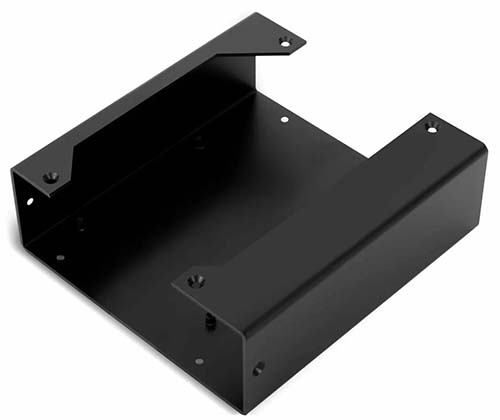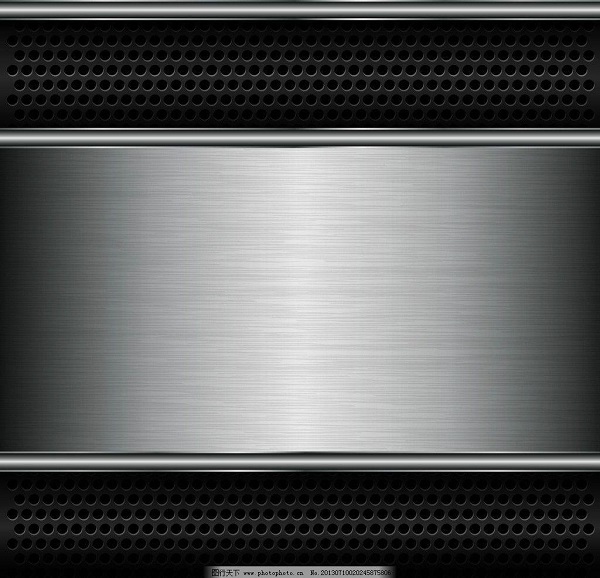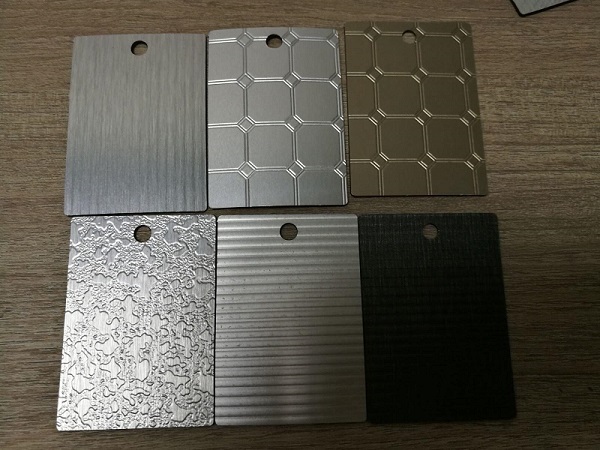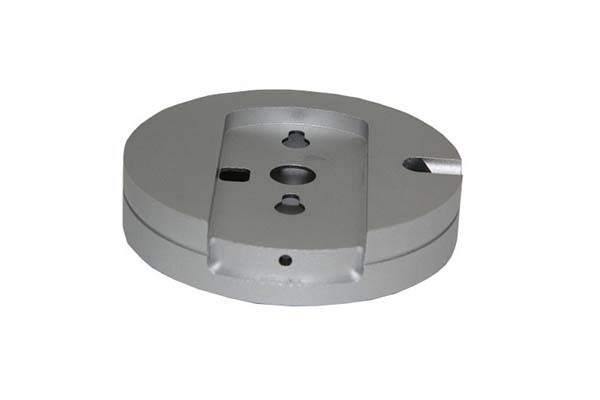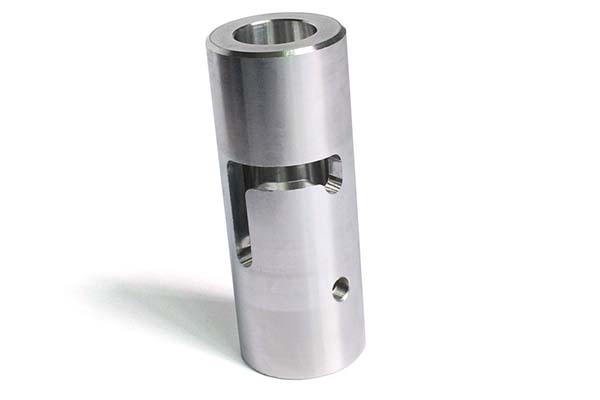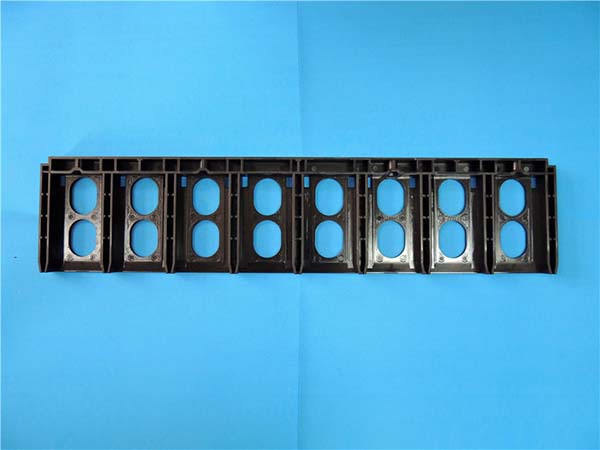Understanding Sheet Metal Fabrication
Sheet metal fabrication is a transformative process that turns flat sheets of metal into various useful structures and products. It involves a series of techniques such as cutting, punching, folding, bending, stamping, welding, and finishing. This process is crucial in many industries due to its ability to create strong, lightweight, and cost - effective components.
Common Metal Materials Used in Sheet Metal Fabrication
- Steel: Steel is one of the most widely used materials in sheet metal fabrication. It offers high strength and durability. Low - carbon steel, for example, is easy to form and weld, making it suitable for general - purpose applications such as automotive parts, machinery enclosures, and construction components. High - carbon steel, on the other hand, is more rigid and is often used in applications where greater hardness is required, like springs and cutting tools. According to industry data, steel accounts for approximately 60% of the materials used in sheet metal fabrication projects in the manufacturing industry.
- Aluminum: Aluminum is favored for its lightweight nature, high corrosion resistance, and good thermal conductivity. It is extensively used in the aerospace industry, where weight reduction is crucial for fuel efficiency. For instance, aircraft bodies often incorporate a large amount of aluminum sheet metal components. In the automotive industry, aluminum is increasingly being used to make parts such as engine blocks, hoods, and doors to reduce vehicle weight and improve fuel economy. The use of aluminum in the automotive sector has been growing at an annual rate of about 8% in recent years.
- Stainless Steel: Stainless steel is known for its excellent corrosion resistance, which makes it ideal for applications in harsh environments. In the food and beverage industry, stainless - steel sheet metal is used to make equipment such as tanks, pipes, and food processing machinery, as it can withstand contact with various chemicals and moisture without rusting. In the medical field, it is used for surgical instruments and hospital equipment due to its hygienic properties. Stainless steel typically represents around 15% of the sheet metal materials used in high - end manufacturing and specialized industries.
Key Services Offered by a Sheet Metal Fabrication Factory
Laser Cutting
Laser cutting is a core service provided by sheet metal fabrication factories. It offers several distinct advantages. Firstly, in terms of precision, laser cutting can achieve an extremely high level of accuracy, often with an error margin as low as ±0.05mm. This high precision allows for the production of intricate and detailed components. For example, when manufacturing small electronic components, the ability to cut with such precision ensures that the parts fit together perfectly. In contrast, traditional mechanical cutting methods may have an error margin of up to ±1mm, which is far less precise.
Secondly, laser cutting is highly versatile when it comes to cutting complex shapes. The high - energy laser beam can follow any pre - programmed path, enabling the creation of irregular and complex geometries that are difficult or impossible to achieve with traditional cutting methods. For instance, when creating decorative metal patterns or parts with curved and angled edges, laser cutting can handle the task with ease.
Moreover, laser cutting minimizes material waste. The narrow kerf width in laser cutting, usually between 0.1 - 0.3mm, means that less material is removed during the cutting process compared to traditional methods like plasma cutting, which has a wider kerf and thus results in more material being wasted. This not only saves on material costs but also contributes to a more sustainable manufacturing process. In high - volume production, these savings in material can accumulate to significant cost reductions over time.
Bending and Forming
Bending and forming are essential processes in sheet metal fabrication that transform flat metal sheets into three - dimensional shapes. This process involves carefully controlling parameters such as the bending angle, radius, and the force applied.
The bending angle is a crucial parameter. For example, in the production of a metal enclosure for electronic devices, the sides of the enclosure need to be bent at specific angles to ensure a proper fit for the internal components and a seamless appearance. A sheet metal fabrication factory uses advanced computer - controlled bending machines. Operators input the desired bending angle into the machine's control system, and the machine precisely adjusts the position of the bending die to achieve the required angle. The accuracy of angle control can be within ±0.5°, ensuring consistent quality across multiple production runs.
The bending radius also plays a vital role. Different applications require different bending radii. In automotive body panel manufacturing, a larger bending radius may be needed to create smooth, aerodynamic curves. By using specialized bending tools and adjusting the machine settings, the factory can achieve the desired bending radius. For instance, for a sheet metal part with a required bending radius of 5mm, the bending process is carefully calibrated to meet this specification.
Complex shapes often require multiple bending operations. Take the production of a custom - designed ventilation duct as an example. The duct may have a combination of straight sections, bends at different angles, and curved parts. First, the flat sheet metal is cut to the appropriate size and shape using laser cutting. Then, it goes through a series of bending operations. The machine is programmed to perform each bend in the correct sequence, gradually forming the duct into its final shape. This process requires a high level of expertise and precise control to ensure that the final product meets the exact specifications in terms of dimensions and shape.
Welding and Assembly
Welding and assembly services are crucial for creating complete products from individual sheet metal components. There are various welding methods available, each with its own applications.
Tungsten Inert Gas (TIG) Welding: This method is known for its high - quality welds and is often used in applications where precision and a clean appearance are essential. For example, in the production of high - end stainless - steel kitchen appliances, TIG welding is used to join the sheet metal parts. The inert gas (usually argon) protects the weld area from oxidation, resulting in a strong and aesthetically pleasing weld. TIG welding is particularly suitable for thin - gauge sheet metal as it allows for precise control of the heat input, minimizing the risk of overheating and distortion.
Metal Inert Gas (MIG) Welding: MIG welding is a faster and more efficient method, making it ideal for high - volume production and thicker sheet metal. In the automotive industry, MIG welding is commonly used to assemble body frames. It uses a continuous wire electrode and an inert gas shield to create a strong bond between the metal parts quickly. This method can handle a wide range of metal materials, including steel, aluminum, and their alloys.
Spot Welding: Spot welding is used when joining two or more sheets of metal at specific points. It is commonly used in the manufacturing of electronic enclosures and some automotive components. In the production of a laptop computer case, spot welding is used to secure the internal support structures to the outer shell. This method is fast and efficient, and it does not require continuous welding along the entire joint, which can save time and energy.
Quality control is of utmost importance in welding and assembly. After welding, the products undergo rigorous inspection. Visual inspection is the first step, where trained inspectors check for any visible defects such as cracks, porosity, or improper bead formation. Non - destructive testing methods like ultrasonic testing and X - ray inspection are also used to detect internal defects that are not visible to the naked eye. These testing methods ensure that the welded joints are strong and reliable, meeting the safety and quality standards required by various industries. For example, in the aerospace industry, where the integrity of components is critical, every welded part is thoroughly inspected to ensure the safety of the aircraft and its passengers.
Industry Experience and Expertise
When it comes to choosing a sheet metal fabrication factory, industry experience and expertise are crucial factors to consider. Yigu Technology, as a non - standard plastic metal products custom supplier, stands out in this field.
Years of Experience
Yigu Technology has been operating in the metal products manufacturing industry for [X] years. Over these years, it has continuously accumulated knowledge and skills in sheet metal fabrication. This long - standing experience has enabled the company to handle various complex projects with ease. For example, in the early years, the company focused on small - scale sheet metal component production for local businesses. As time passed, with the growth of its technical capabilities and customer base, it gradually took on more challenging projects, which has significantly enhanced its expertise.
Service in Multiple Industries
The company serves a wide range of industries. In the automotive industry, Yigu Technology has provided sheet metal parts for vehicle body structures. These parts need to meet strict safety and quality standards, such as high - strength requirements to ensure passenger safety in case of collisions. By using advanced manufacturing techniques and high - quality materials, Yigu Technology has successfully supplied reliable components, contributing to the production of safe and efficient vehicles.
In the electronics industry, Yigu Technology manufactures sheet metal enclosures for electronic devices. These enclosures require precise dimensions to fit the internal components perfectly and provide protection against electromagnetic interference. The company's expertise in precision manufacturing allows it to produce enclosures that meet the high - tech demands of the electronics industry, ensuring the stable operation of electronic products.
In the medical equipment industry, Yigu Technology has been involved in manufacturing sheet metal parts for medical devices. These parts must meet strict hygienic and corrosion - resistance standards. Through the use of stainless - steel materials and advanced surface treatment techniques, Yigu Technology has produced components that are suitable for use in the medical field, helping to improve the quality and safety of medical equipment.
Successful Cases
Yigu Technology has numerous successful cases that demonstrate its capabilities. One such case is a large - scale project for an aerospace company. The project required the production of complex sheet metal components with extremely high precision requirements. Yigu Technology's team of experienced engineers and technicians first conducted in - depth research on the design requirements. They then used advanced CAD/CAM software to design the manufacturing process, ensuring that every detail was carefully planned. During the production process, state - of - the - art laser cutting and precision bending equipment was used. Quality control measures were implemented at every stage, from material inspection to the final product inspection. As a result, Yigu Technology successfully delivered the components on time, meeting all the strict quality standards of the aerospace industry. This project not only showcases the company's technical strength but also its ability to handle large - scale and high - requirement projects, further enhancing its reputation in the industry.
FAQs
Q1: What is the minimum order quantity for sheet metal fabrication?
The minimum order quantity (MOQ) for sheet metal fabrication varies from factory to factory and also depends on the type of products. For simple and common sheet metal parts, some factories may have an MOQ of as low as 10 - 50 pieces. However, for more complex and customized products, the MOQ could be in the range of 100 - 500 pieces. Factors such as the complexity of the design, the cost of setting up the production line, and the availability of raw materials all influence the MOQ. It is best to directly consult the sheet metal fabrication factory to get the most accurate information regarding the minimum order quantity for your specific project.
Q2: How long does the sheet metal fabrication process usually take?
The duration of the sheet metal fabrication process is affected by multiple factors. For small - scale and relatively simple projects, the fabrication process may take as little as 3 - 7 working days. This includes cutting, bending, and basic assembly. However, for large - scale projects with high - volume production or complex designs that require intricate welding, multiple finishing processes, and strict quality control inspections, the process could take 2 - 4 weeks or even longer. For example, a project that involves manufacturing a large number of customized sheet metal enclosures for industrial equipment with tight tolerances and high - quality surface finishes will naturally take more time. To determine the exact time required for your project, it is recommended to communicate closely with the sheet metal fabrication factory, providing them with detailed specifications and requirements.
Q3: Can a sheet metal fabrication factory handle complex designs?
Yes, a professional sheet metal fabrication factory, like Yigu Technology, has the capabilities to handle complex designs. These factories are equipped with advanced CAD/CAM software, which allows engineers to precisely design and simulate the manufacturing process of complex parts. In addition, they have highly skilled technicians with years of experience in operating state - of - the - art equipment such as high - precision laser cutters, multi - axis bending machines, and advanced welding robots. For instance, Yigu Technology once successfully completed a project for a high - end electronics company that required the production of sheet metal enclosures with complex internal structures and precise cutouts for various components. By leveraging their technical expertise and advanced equipment, they were able to meet the strict design requirements and deliver high - quality products on time, demonstrating their ability to handle complex designs effectively.
